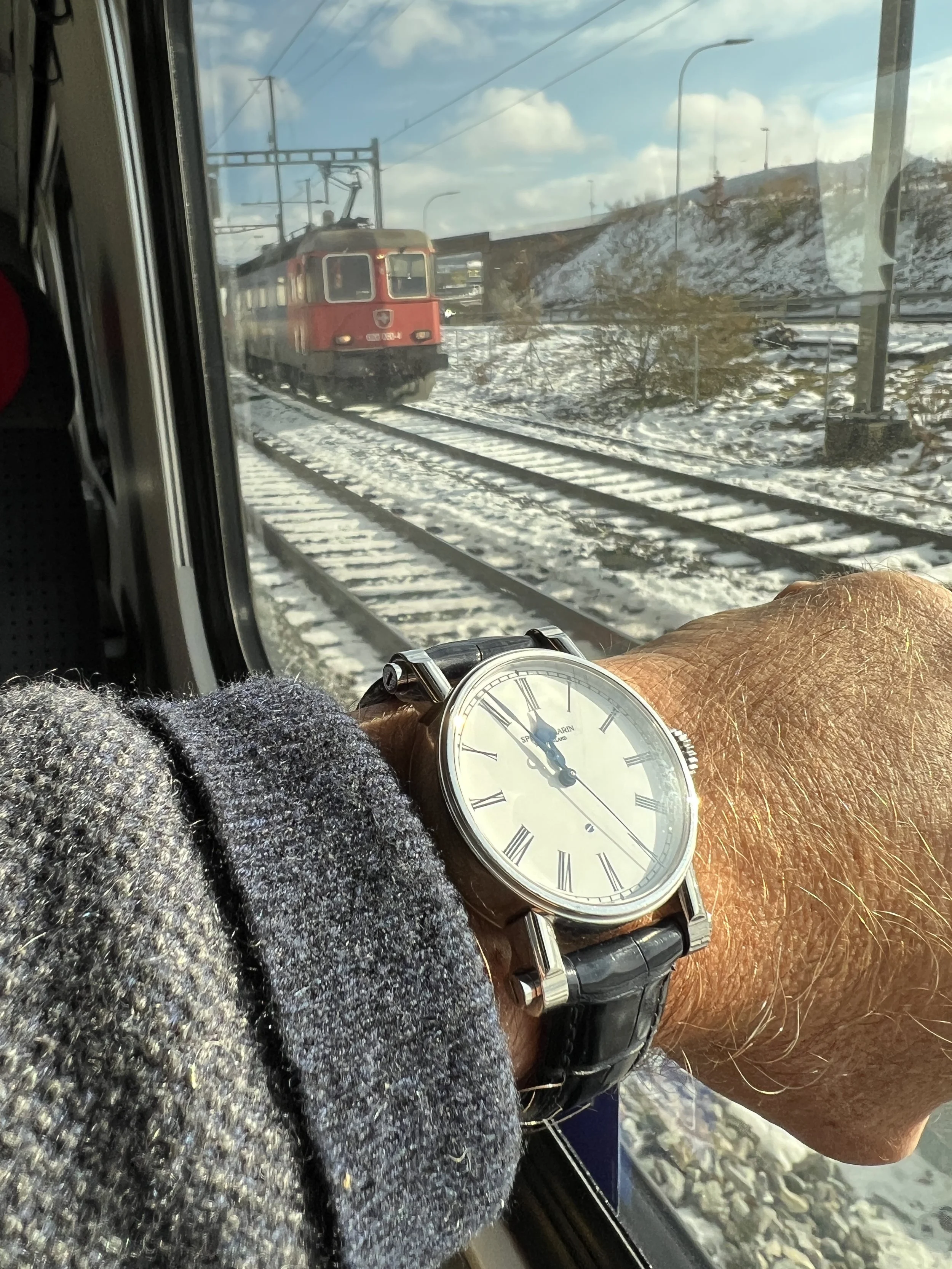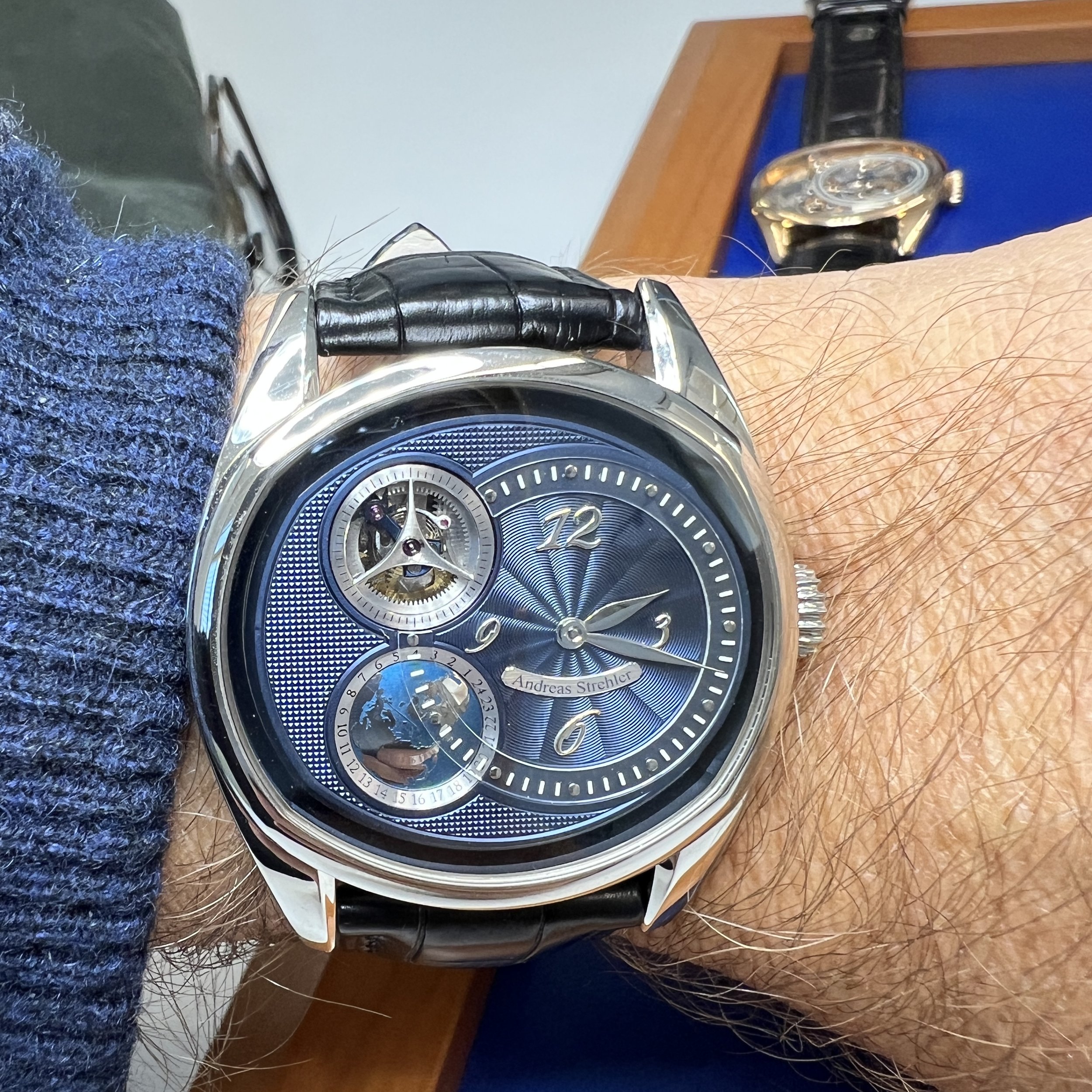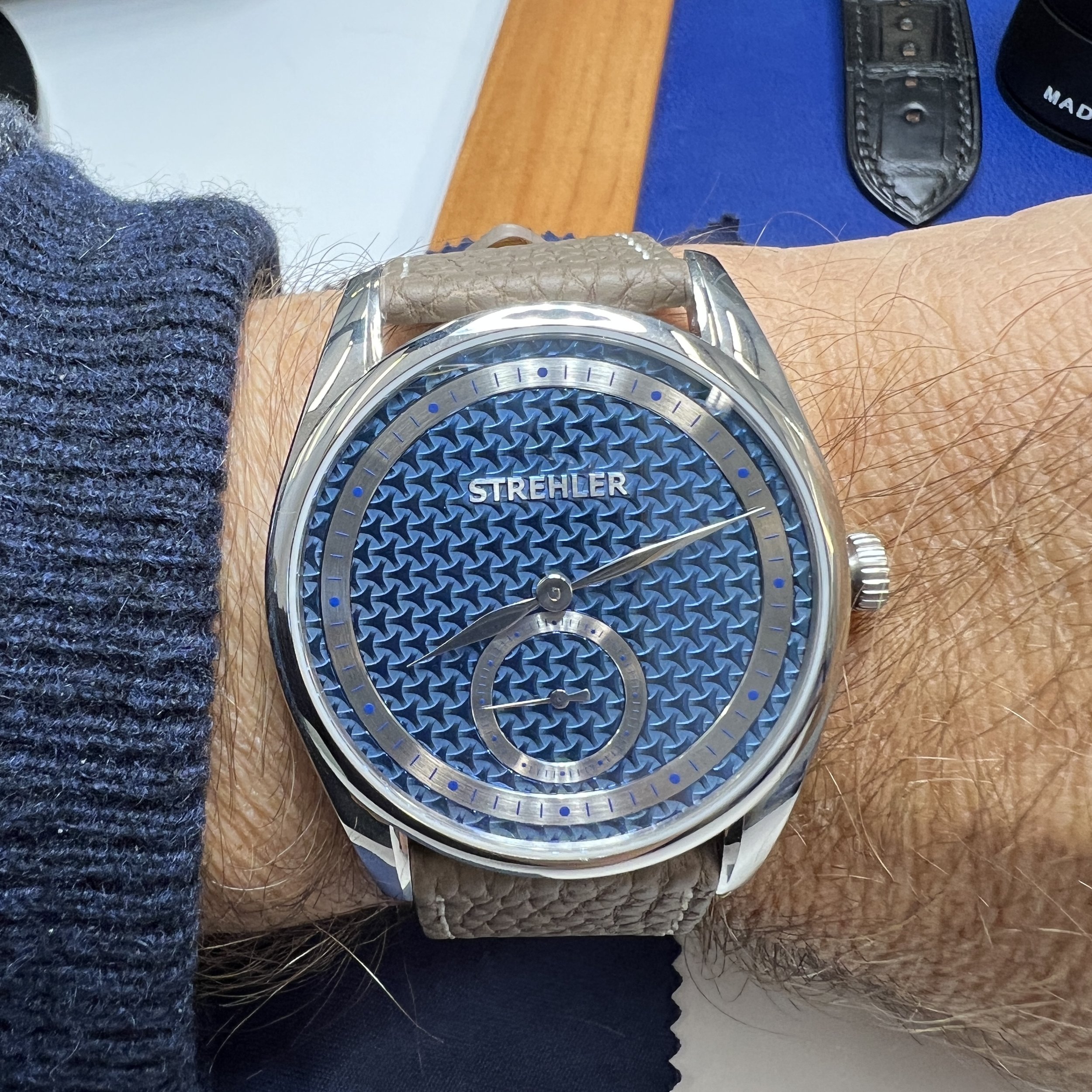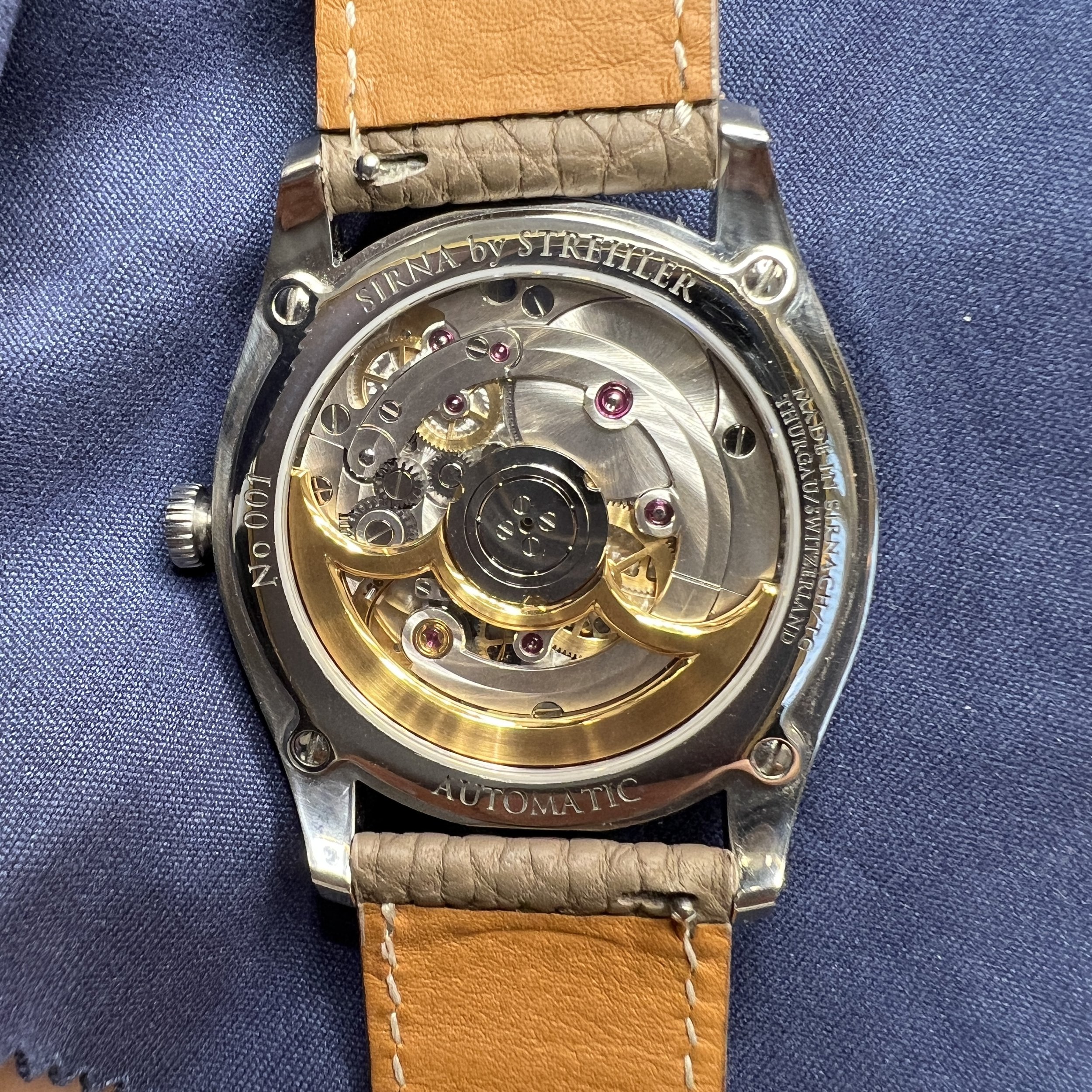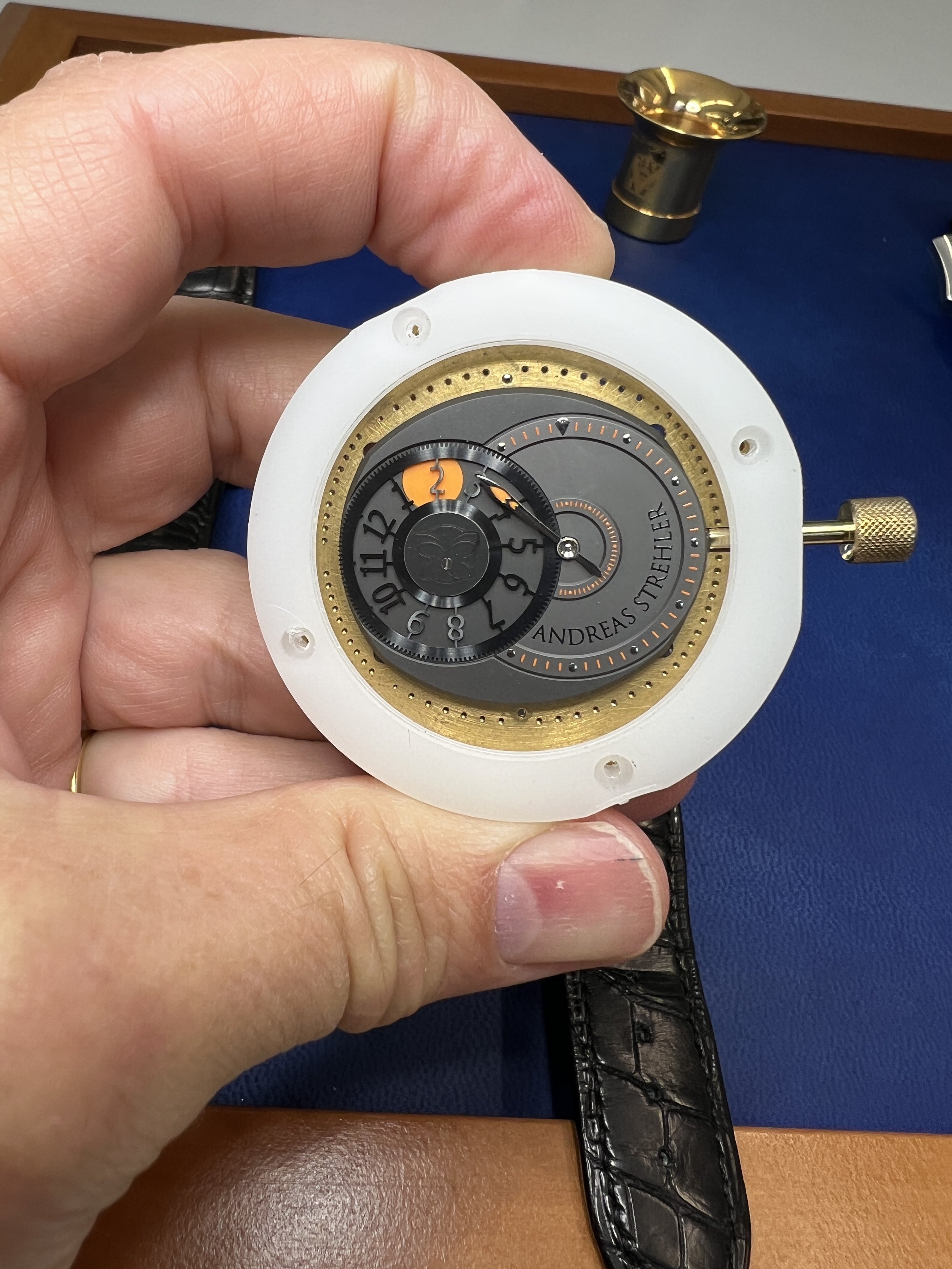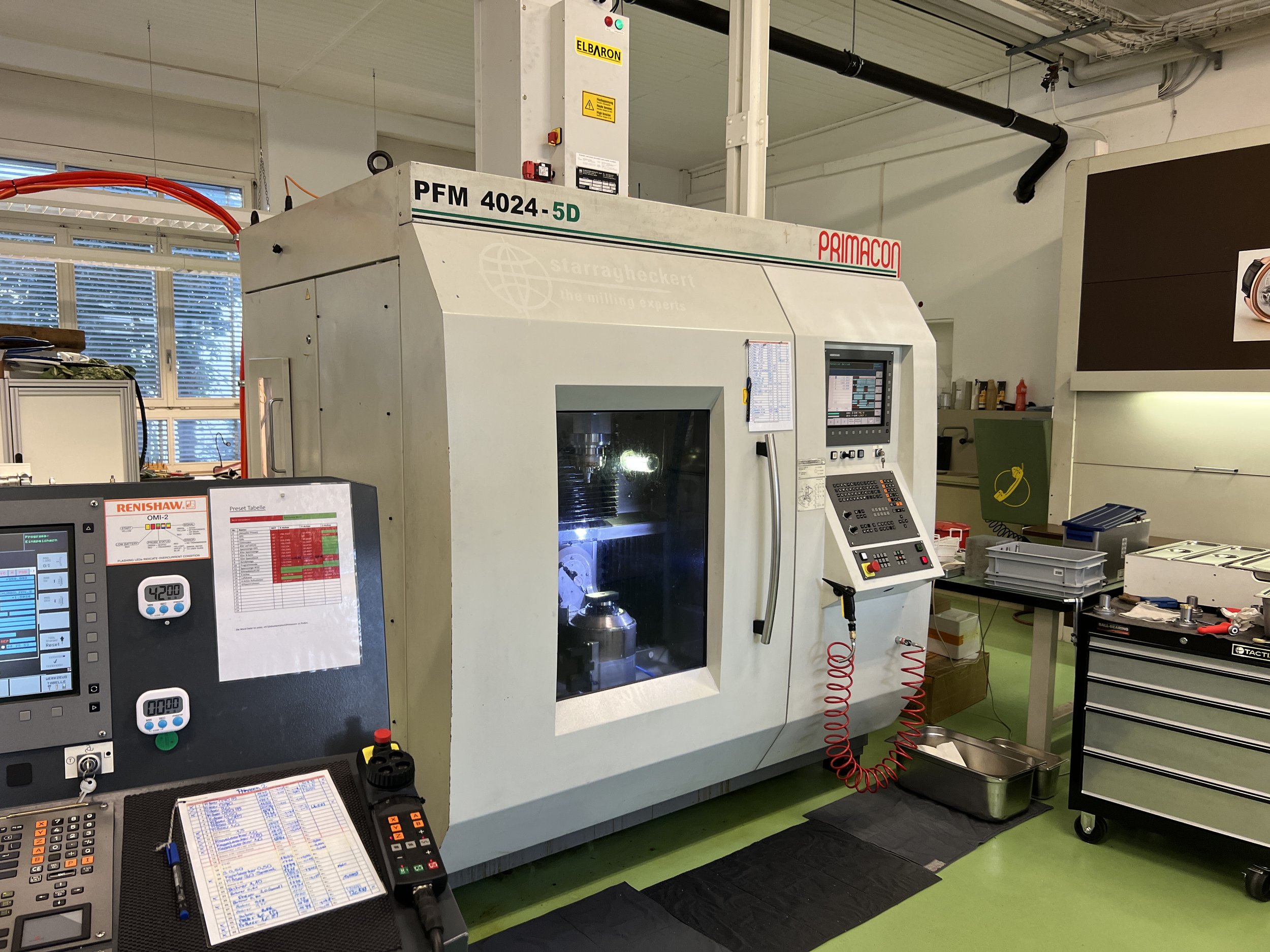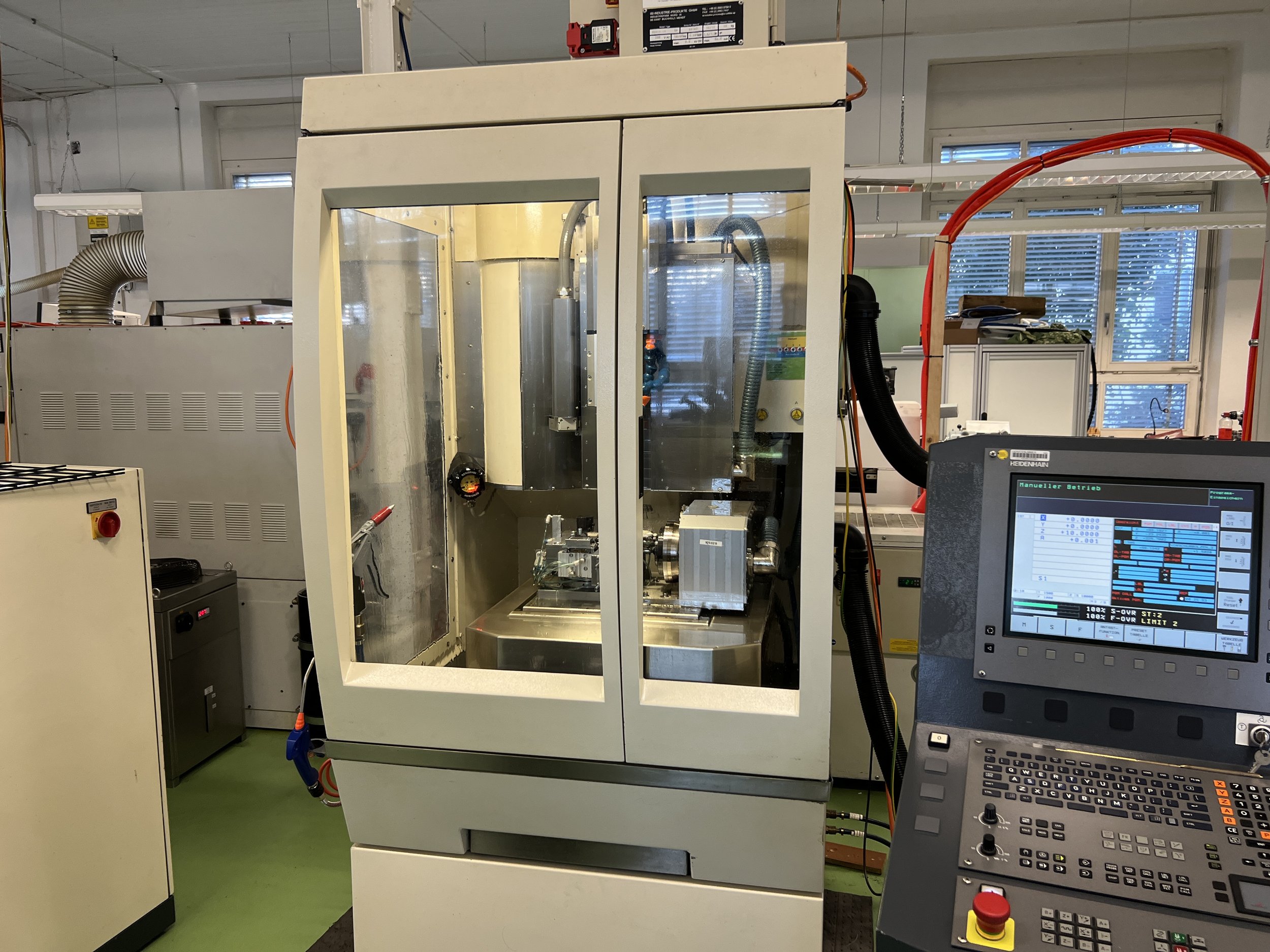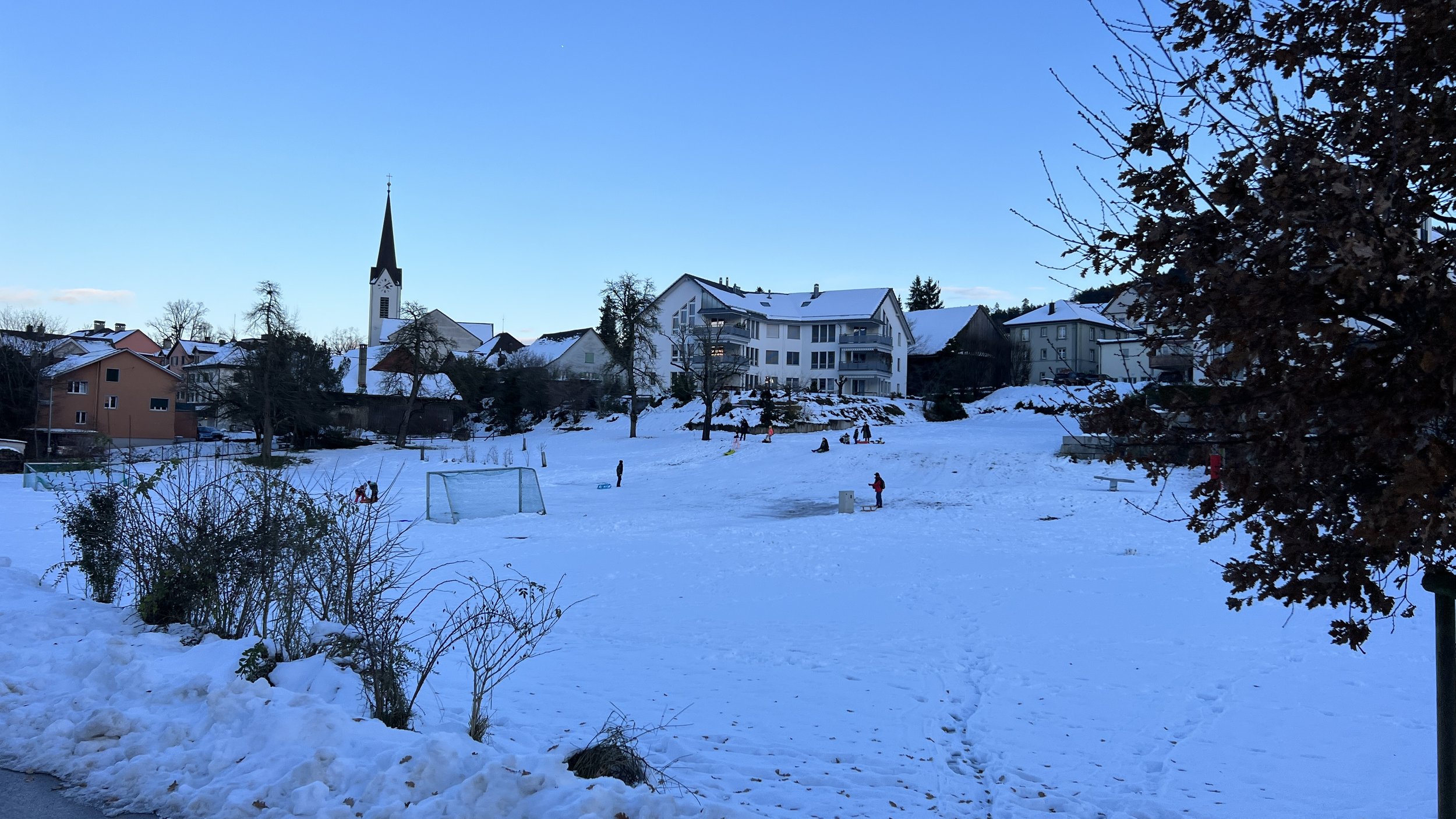SWITZERLAND Dec. 3-9th
View from the hotel upon arriving into Neuchâtel.
My base for the next few days was the town of Neuchâtel on the northern shore of Lake Neuchâtel in Switzerland, I was within an hour of most of the watchmakers I needed to see. It snowed the first day as I prepared for the visits to all the watchmakers, I walked around the snowy town, it was refreshing but not a lot of exercise.
Snow lay all around...
The next morning I was up and on a train to the eastern part of Switzerland east of Zürich to the small town of Sirnach where Andreas Strehler and his team have their workshop. Train travel in Switzerland is always a pleasant experience for me because they are always on time. My trusty, Speake-Marin Piccadilly joined me on this trip, and I was able to capture some of the snowy Swiss scenes as I flew by.
Upon arriving in Sirnach, I was greeted by Andreas’s marketing man Gabriel, who kindly walked from the train station with me to the atelier and we discussed how he got to be working with Andreas. Initially I was shown to a room with a big table and a safe and asked to wait for a few minutes until Andreas was freed up from a call. He arrived shortly after with a big smile and we sat down and discussed business and the continuing development of his amazing watches.
Pieces for show and tell...
I first met Andreas in Baselworld in 2012 from memory, and he had impressed me with not only his watches but also his amazing clock that was in the style of Breguet’s sympathetic master clock and pocket watch where the clock featured the perpetual calendar. Andreas’ Tishkalendar is more complex because the pocket watch displays the time and when it’s inserted into the desk Calendar unit, which is a perpetual calendar, the calendar resets. When the owner leaves the desk he takes the pocket watch with him, the desk calendar stops. Once the owner returns to his desk after some days or weeks, he inserts the pocket watch into the desk calendar. The desk calendar knows how long the owner was absent and sets the date correctly, as it has a mechanical memory! This was built in 1997 to give you an idea of Andreas’ remarkable mechanical mind. He was not yet 30 years old when he built this and that to me is definitely a sign of horological genius.
Two of the watches they had to show me where the Papillon d’Or in a rose gold case, which is the skeletonized beautiful watch shown below, and the Sauterelle à heure mondiale, with a blue dial. The second piece shows at 8 o’clock a three-dimensional view of the northern hemisphere as seen from above the north pole, rotating counter clockwise once in 24 hours, as the earth does and the remontoir d’égalité system up at 10 o’clock with a wonderful blue guilloche dial. That I got to handle these watches was quite a treat. One aspect not typically known about the Papillon d’Or caliber, is that it contains sapphire crystal gear wheels for the time setting mechanism another is the possibly world’s smallest differential used on the power reserve indicator.
The mighty Papillon d'Or
What a watch!
The Sauterelle à heure mondiale
Back of the Sauterelle à heure mondiale, with it's moonphase and world time indication. Note the 4 screws on the corners of the caseback. We will come back to these important parts below in the article.
A more recent development for Andreas was a new brand under the umbrella of his company, called “Strehler” not to be confused with “Andreas Strehler”, which is the high horology watchmaking division, and what he’s primarily known for in Independent Watchmaking circles.
The new model is called the Sirna by Strehler, it is a time only three hand watch with an automatic movement. The sub dial and fantastic dial are made in titanium and colored carefully in their workshop. The watch features an 18k gold rotor in the SA-30 Andreas designed automatic caliber. This round watch in 40 mm stainless steel case is a new direction for Andreas and allows collectors to purchase a watch designed by Andreas and made in his workshop at a more affordable price than his typical work. The Andreas Strehler watches, which feature lots of high end hand finishing and incredible horological design of complex high complications. This Sirna model is the other end of Andreas’ spectrum and it is made in his workshop, but a different level and the machining that does all the finishing is clear to see under a microscope or under loop. He collaborated with Eric Giroud on the design of the triangles and dial lay out. The steel chapter rings are made separately and attached after the finishing/hand polishing of the dial is completed. The solid gold rotor does receive hand bevels with inner angles though!
The Sirna in it's presentation box.
Sirna on the wrist
The titanium dial pops in certain lighting, as a lover of blue dials, this watch is just my "cup of tea"
It is a well designed automatic caliber that has been used by several other independent watchmaking friends of Andreas’ in their brands. Some have clearly given him the credit for it, others not so much, which to me is a bit of a shame, but not uncommon in the rather too often, slightly opaque watchmaking world.
The lovely automatic caliber with 18K solid gold rotor.
The other watch that was shown to me was the Time Shadow. This is, if you will, an entry-level Andreas Strehler piece and it will be a small series of eight pieces to recognize that this is the eighth movement from Andreas Strehler. It features a clever system where the hour desk is turning above a colored dot, which in this watch was orange, at 12 o’clock and the cut out for the numerals reveals the current hour silhouetted against the orange with a separate minutes hand to the right. A clever way to tell time with a lovely hand finished caliber in the back.
Time Shadow dial side movement only.
Time Shadow caliber back side
I was then shown around the quite large workshop of the manufacture of Andreas Strehler, and the number of watches coming from his bench is tiny in comparison to the number of parts, and watches that are being manufactured here for other companies that are under contract.
A row of CNC lathes at the Strehler manufacture
You’ll see many of the familiar machines and the whole series of CNC machines and lathes in order to make these precision parts for himself and many others.
CNC lathe
An old Hauser machine
Another old machine
Modern CNC multi axis lathe
The big eye-opener for me was the case, and how it was constructed. A very clever system of the central cushion shape together with the separate lugs/sides that slide into the center section of the case. Those three parts are then fastened by the back of the case, which is screwed into the two sides which locks in the three parts. The system is quite innovative and practical, because it allows for the refinishing of the parts, without the issue of high polish straying onto a satin finish part or vice versa. I was shown a gold case by Andreas and he showed me how it fit together, very clever and practical as I said.
Parts of the case
Andreas showing me how the sides slide onto the center cushion part pf the case.
The finished product, the polished case of the Papillon d'Or
He went into the high-end assembly room, which featured three people working on the assembly of some of his watches and almost certainly other companies. I was not allowed inside due to the nature of some of the watches being made inside for those other companies. NDA’s are part of Swiss watchmaking after all…
Snapped through the window...
He pulled out a Papillon d’Or caliber that was in the process of being built, and I was able to see the front and back with the lovely hand finishing of the caliber, it was quite an amazing sight.
Papillon D'Or caliber in process, almost completed. Note, it is without the sapphire crystal gear wheels.
Beautifully hand finished caliber
He also showed me the remainder of the workshop where they have a hand engraver, which I believe is the only hand engraver in the watch business in the Eastern or German speaking part of Switzerland. Andreas has a system of hiring these engravers because he needs them, and it’s difficult for them to find work anywhere else in the German speaking part of Switzerland within the watch business, because the majority go into the French-speaking part of Switzerland. If you are a German speaker and live in eastern part of Switzerland, and you want to hand engrave in the business, Andreas is probably your only option.
I departed from the atelier workshop of Andreas and headed back to the train station through the village to catch my train back to Neuchâtel where I was staying.
The unassuming Andreas Strehler manufacture.
A church in Sirnach, with kids sledding in the foreground.
The sun sets early in December and I was able to capture this view of the church in Sirnach. I retired to my hotel quite tired after a long day of amazing horology. Many thanks to Andreas and Gabriel for showing me around and spending time.
My walk through the village to the train station.



